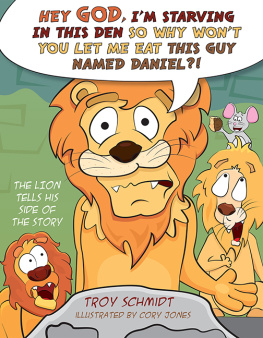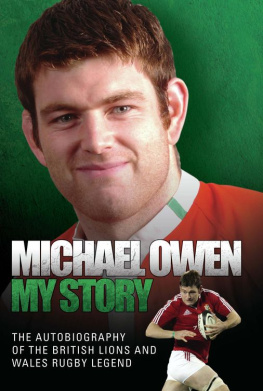CHAPTER 1
Made in America
It was a goal of quality to win a lusty all-British affair and it warmed those who had left the comfort of their homes and braved the iron-cold conditions. Celtic were taking on Tottenham Hotspur and Jimmy Johnstone, the Celtic outside-right, had been fielded, craftily, by Celtic manager Jock Stein in a more central role, at inside-right. Johnstone had dropped deep into the middle of the park to draw several Spurs players to him, which made especially effective his natty pass, crisp as a newly sliced apple, to Stevie Chalmers. The centre-forward had taken over Johnstones natural beat and went whirling down the wing in his teammates place, covering half the length of the pitch, before cutting inside to the goal-line and whipping over a cross for Bobby Lennox to come hurtling in and whisk a diving header past Bill Brown, the Tottenham goalkeeper. It made the score 21 and sealed a vital victory for Celtic that had been forged in the fierce heat of competition.
Celtic were far out of sight not only of Tottenham on the day but also of their own followers, through performing in an unseasonably frigid San Francisco as part of their close-season tour of North America in the late spring and early summer of 1966. There had been a non-partisan, neutral crowd of 12,000 looking on at the Kezar Stadium and no major trophy at stake but Celtic, in the 1960s, famously and avowedly did not play friendlies: the Glasgow club contested every match, regardless of its billing, with intensity and purpose and a desire to win. This match had proved that to be no empty motto.
The dynamic fashion in which Celtic took the game to Spurs enthused the organisers of a series of challenge matches that summer of 1966 which had the objective of popularising football or soccer in North America. Celtic were putting together a whole new ball game and those Americans present were being given a privileged preview of it.
The match with Tottenham arrived in the middle of a tour that had begun on 12 May 1966 with a 101 victory over a Bermuda Select. The trip combined hard training with sightseeing, socialising and activities such as snorkelling, sunbathing, visits to horse-racing and receptions with local dignitaries. The players had barely finished their domestic fixtures with a 10 win at Motherwell on 7 May that clinched the Scottish League title before they were whisked on to a transatlantic flight. There were no complaints at being taken away from hearth and home for five weeks; the opposite was true. A place on the tour was prized by every player and those in and around the first team had fretted for weeks over whether Jock Stein would include them or not. Holidays to the USA were, in the mid-1960s, only for the super-rich and footballers were still far from being included in that bracket. These were young men who, as boys, had holidayed, if they were lucky, within Scotland and now they had the chance to visit the land of all-night diners and tailfinned cars, a near-fantasy land that represented post-war expansiveness and freedom, as seen in the movies. When the time came for those selected to be measured for their special suits and raincoats, the ones who missed out watched all those preparations with heavy hearts.
It was the making of us, that tour, Bobby Lennox, the Celtic outside-left, says. It got us all together. Wed fly to Toronto, train the next day, play the next night; fly to New York, train, play; it was great and everybody got so friendly and so close and it helped the team blossom; it really did. St Louis, San Francisco, Los Angeles; Vancouver; it was the trip of a lifetime. In the sixties, America felt as if it was a million miles away. We knew two or three months in advance that they were only taking a certain number of players and you were really hoping you were going; that you were actually going to San Francisco. Although not, under Jock Stein, wearing flowers in their hair.
It couldnt happen now, Lennox says. It was glamorous at the time but it was part of the job. I was engaged to Kathryn and, even then, phoning Kathryn at her mums house in Saltcoats I had to phone from my hotel room to the girl downstairs [on reception] and say, Ardrossan/Saltcoats... A... R... D... right through... Shed go to New York and go through the spiel to the girl in New York, whod go on to the girl in London, then shed go on to the girl in Glasgow. Ill never forget the first day I did it. I sat for ages waiting to get through and Kathryn was out... I couldnt believe it you were quicker writing letters.
It got us all so close. Bobby [Murdoch] moved into midfield and joined Bertie [Auld]. We trained hard and we had to win the games. It was a great five weeks. Jock got everybody going and found room-mates for people although Jimmy and I were always together. He might change some people but he and I always roomed together.
Everybody loved Bermuda, obviously. So on the last day there, we were out having our photograph taken in front of the Princess Hotel, which was magnificent. Sir Robert [Kelly, the Celtic chairman] was there and he said, If you win the European Cup, youll be back. That was a throwaway line...
Eddie Baily, the Tottenham assistant manager, who was selecting their team in place of Bill Nicholson, the manager, admitted that Celtic were on a different plane to their British friends and rivals. They are a better team than us, Baily had said of Celtic prior to that friendly between the clubs in San Francisco. All I can hope to do against them is prevent goals. I do not have men with the ability of that little fellow Lennox to get goals close in. We must try to contain them as much as possible. Im sorry it has to be this way but our reputation cant stand a big defeat so well play a very tight game. That was quite an admission of inferiority from a representative of a club that was one of the premier forces in the British game in the 1960s. Tottenham had won the FA Cup and League Double early in the decade and had become, in 1963, the first British club to lift a European trophy, when they had beaten Atltico Madrid to win the European Cup-Winners Cup. The London side, though, would prove to be distinctly inferior to Celtic over three matches between the clubs during a tour that would not only be the most vital in Celtics history but one conducted almost in private. No British television station sent cameras to the matches and there was minimal interest from the North American media and so Jock Stein could experiment in peace with the shape and set-up of his team.
Out there, Billy McNeill said, we would have meeting after meeting and you could just sense that Jock was preparing the groundwork for the following season and the European Cup. It cemented the relationship between the players and not only did that help each of us individually, it helped to galvanise the whole team. Celtic had always had soul an indomitable spirit was now being added to that by Stein.
The supporters at home would, in time, enjoy seeing the fruits of that North American odyssey but a fortnight into Celtics five-week stint across the Pond, the major sporting news back in Scotland had been as expected for the time of year the Epsom Derby, still held on a Wednesday afternoon, and the most glamorous occasion in the flat-racing season, was enjoying its annual day in the sun, although for most Britons, the panoramic splendour of the Downs would be viewed only through the narrow aperture of a black-and-white television screen albeit a new, 23-inch one for the well-heeled among the population. Charlottown, ridden by Arthur Scobie Breasley, a 52-year-old grandfather, won the race, confirming that the unlikely can and will happen in sport. Fanatics in Glasgow, desperately seeking a fix of football, could take in the Junior Cup final replay at Hampden Park on the evening of Derby Day, 25 May, in which Bonnyrigg Rose would defeat Whitburn 61.














